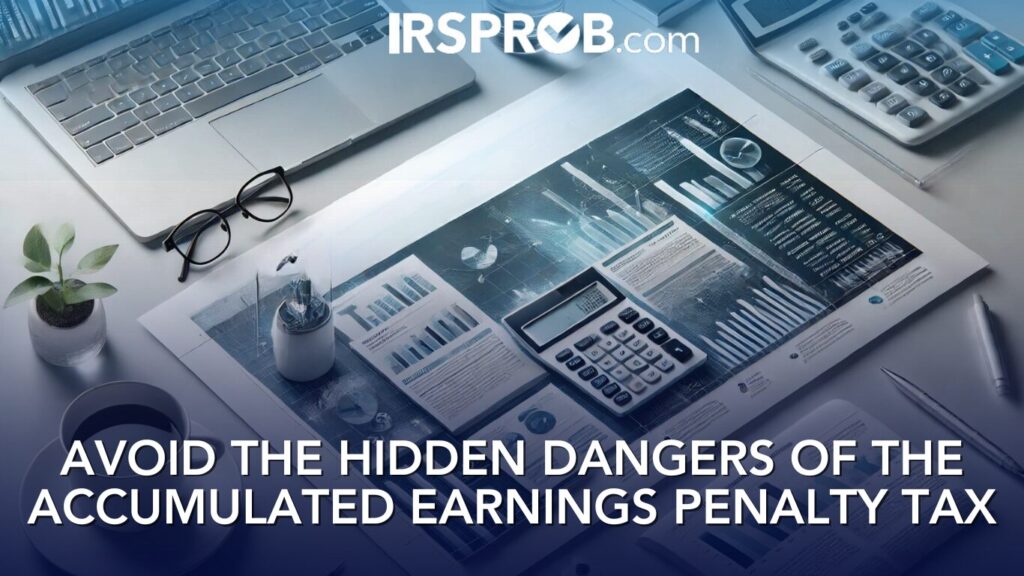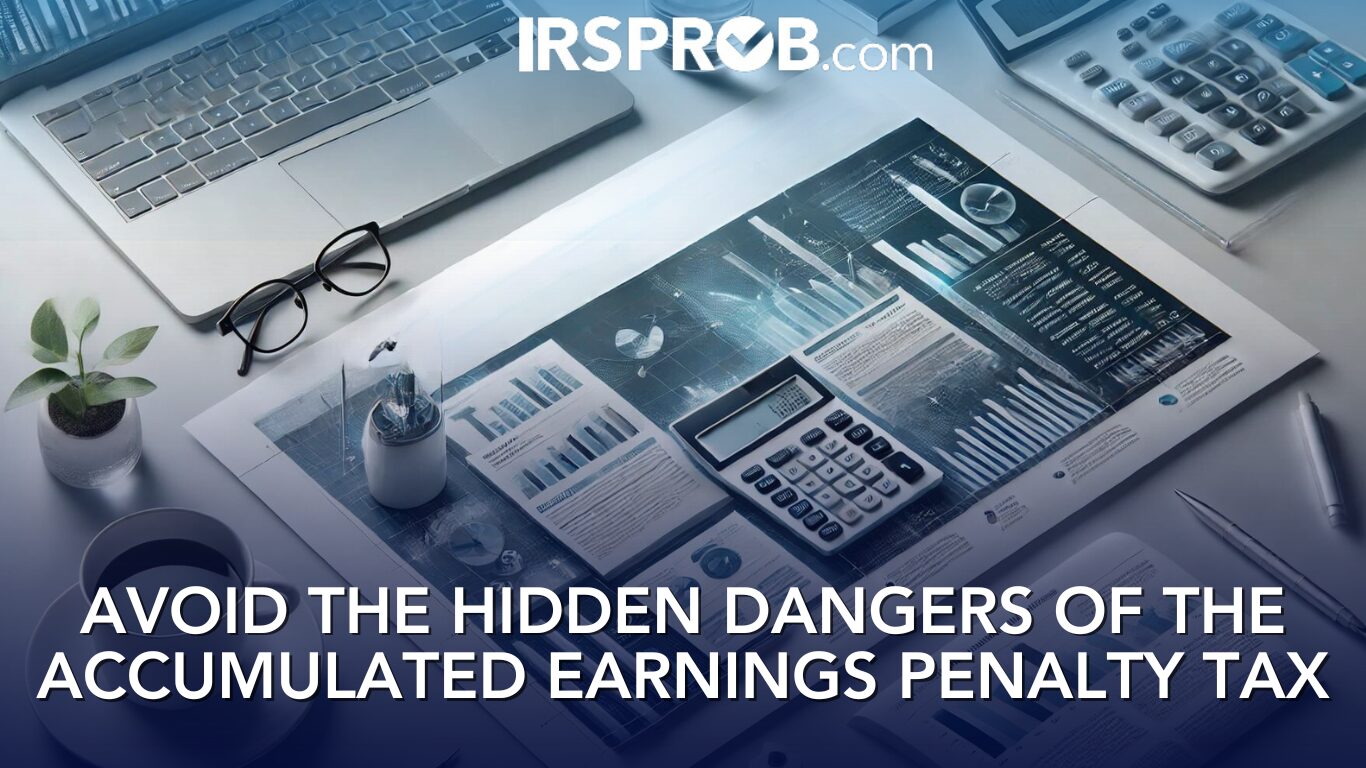
If you’re running your business as a C corporation, understanding the implications of the Accumulated Earnings Tax (AET) is crucial. The AET is a 20% penalty tax imposed by the IRS on C corporations that retain earnings beyond what the IRS considers reasonable. This penalty tax is particularly concerning because it is not tax-deductible and is levied on top of the 21% corporate income tax rate, potentially leading to an effective tax rate of 41% on improperly retained earnings.
The Mechanics of C Corporation Taxation
The Tax Cuts and Jobs Act (TCJA) reduced the corporate tax rate to a flat 21%, significantly lowering the burden for C corporations compared to the pre-TCJA top rate of 35%. However, despite the appeal of this low rate, the IRS is vigilant about preventing C corporations from exploiting it to avoid double taxation. Double taxation occurs when corporate profits are taxed at the corporate level and again when distributed as dividends to shareholders. The temptation for corporations to avoid this by retaining earnings is precisely what the AET is designed to discourage.
For example, if your C corporation earns $1,000 in profit, it pays $210 in corporate taxes. If the remaining $790 is distributed as dividends, shareholders pay an additional tax, often at a rate of 15-20%, potentially increasing the total tax burden to $329 or more. Retaining profits within the corporation might seem like a way to avoid this double taxation, but the IRS’s AET ensures that businesses can’t indefinitely defer the second layer of taxation by simply holding onto profits.
How to Avoid the AET
There are several strategies that C corporations can employ to avoid falling foul of the AET:
- Elect S Corporation Status: An S corporation, as a pass-through entity, is not subject to the AET. Earnings are taxed directly to shareholders, eliminating the risk of accumulating excess earnings. However, switching to an S corporation only protects against future accumulations; any excess retained earnings from prior years remain subject to AET scrutiny.
- Retain Earnings Below the AET Credit: C corporations can retain up to $250,000 ($150,000 for personal service corporations) in earnings without triggering the AET. These limits were set in 1981 and have not been adjusted for inflation, meaning that what was once a substantial cushion is now relatively modest. Strategies to reduce retained earnings include paying out dividends, increasing employee compensation, or providing additional fringe benefits. However, compensation must be reasonable to avoid reclassification as a disguised dividend.
- Document Business Needs for Retained Earnings: Corporations can retain earnings above the AET limits if they can demonstrate that the accumulation is necessary for reasonable business needs. This could include funding business expansion, acquiring other businesses, maintaining working capital, or preparing for contingencies like potential lawsuits or product liabilities. The key is to document these needs thoroughly, with corporate minutes, board resolutions, business plans, and budget documents, to provide a clear, contemporaneous record of why the earnings were retained.
Practical Takeaways
Here are the critical points to keep in mind to avoid the AET:
- The AET is a penalty tax imposed after an IRS audit if the corporation is deemed to have retained excess earnings to avoid issuing taxable dividends.
- Corporations can retain up to $250,000/$150,000 without triggering the AET, but this limit may be insufficient for many businesses.
- Accumulations beyond these thresholds are permissible if they are essential for reasonable business needs, but these needs must be well-documented.
- Electing S corporation status can shield future earnings from the AET, though it won’t protect past accumulations.
Conclusion
In conclusion, while the 21% corporate tax rate under the TCJA is beneficial, C corporation owners must carefully navigate the accumulated earnings landscape to avoid the potentially hefty AET. Proactive planning, thorough documentation, and, when appropriate, converting to an S corporation can all help mitigate the risks associated with retaining earnings in a C corporation.
By understanding these strategies and keeping meticulous records, business owners can protect their companies from unexpected penalties and make the most of their corporate tax structure.
For more personalized advice or assistance in navigating these complexities, don’t hesitate to reach out to us at IRSProb.com. We’re here to help you avoid the pitfalls and maximize the benefits of your corporate tax strategy.









